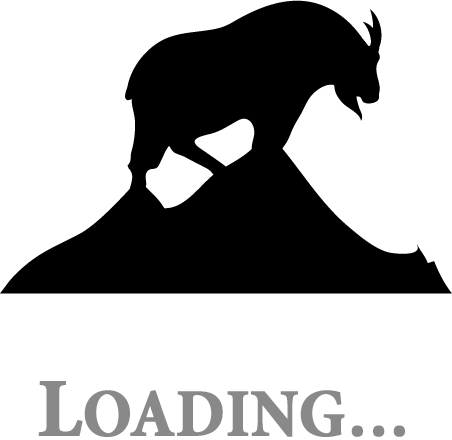Tete Jaune residents get FireSmart

By Spencer Hall
Residents gathered at the Tete Jaune Community Hall last Wednesday to learn how they could make their properties more resilient to potential wildfire damage.
The event — organized by Tete Jaune locals Peter Amann, Gary Wallace, and Bruce Beauchamp — kicked off at 7 p.m. with a few words from Dannielle Alan, Director for Electoral Area H with the Regional District of Fraser-Fort George.
Speaking to attendees, Alan thanked Wallace for being a driving force in bringing awareness of the FireSmart program to the community, which she says is crucial for the efficacy of the program. She said the FireSmart program will only become more crucial as the area continues to see dryer conditions earlier in the year.
“Has anybody noticed how dry it is right now? We have a fire season starting in April. We’re into this, what we call spring dip — that’s a May thing and it’s happening now. I don’t think it’s going to get any better. I think we’re going to still see these high danger ratings for fires that last all summer long. And the more that we can do to protect ourselves, to protect our neighbors, to protect our community, the better it is,” Alan said.
The next speaker was Marion Cousineau, a member of the RDFFG’s Emergency Support Services team, who told attendees what supports would be available to them should an emergency event such as a wildfire, or other natural disasters that tend to occur alongside wildfires, like landslides, occur in the community. She said her job in those scenarios is getting residents a three-night hotel stay, food, clothing and other supplies, such as shampoo, deodorant, and other incidentals residents may not have a chance to grab.
“There’s different emergencies that may happen. That’s where I kind of come in. If you don’t have insurance, I don’t hold that against you,” Cousineau said.
She informed the crowd that her team is moving towards a computerized system and encouraged attendees to download the BC Services Card app so they could easily register for emergency services in the event of a natural disaster.
“If you have that app on your phone or iPad or computer, then when it does come time to evacuate, you don’t actually have to come to a reception center to see me. You can go on a computer, a phone and you can register for some of those supports,” she said, adding the app is only for use in B.C.
Attendees then heard from former RDFFG FireSmart coordinator David Hruby, who walked the crowd through the BC FireSmart Home Ignition Zones Assessment. Hruby was joined by David Lerch, wildfire assistant for the Robson Valley zone of the BC Wildfire Service.
Hruby started by explaining that sparks and embers are the main cause of wildfire spread and said that FireSmart aims to slow the fire down by decrease the amount of combustible materials on a property, which reduces the chance of those embers or sparks successfully catching, making wildfires easier to manage.
He said the purpose of the assessment is not asking residents to make massive changes to their property, but to give them information on how to make their properties more resilient to wildfire damage and allow them to prioritize the changes they can make incrementally.
The assessment consists of three zones: the immediate, intermediate, and extended zones. The immediate zone covers a 1.5 metre radius surrounding a structure, while the intermediate zone covers the 1.5-10 metre radius. The extended zone is the 10 metre to 30 metre area surrounding one’s home.
According to the assessment, the immediate zone should be a non-combustible area extending 1.5 metres from the home and any attachments or outbuildings. It recommends structures have clean gutters, multi-pane windows, enclosed eaves, non-combustible fire-rated vents with 3mm screening. Hruby said while performing assessments last year for the RDFFG, vents were one of the main issues he found on properties.
“I gave an option which is very simple. Normally these vents come with a screen on the inside… put your screen on the outside, it’s not as pretty, but its fire preventative. So, just keep the embers at a distance if you can,” he said.
Decks and porches should be enclosed and made of non-combustible material and homes be surrounded by 1.5 metres of gravel, rock mulches or fire-resistant plants. Mulches made of bark, cedar, pine needles and other plant material are not recommended in the immediate zone as they are flammable. To view a FireSmart landscaping guide, visit https://firesmartbc.ca/resource/landscaping-guide/.
For those who have plant-based mulches and can’t afford to replace it, Hruby noted there are environmentally-friendly fire-retardant sprays available.
FireSmart recommends roofs be made of fire-rated materials, such as metal, clay or composite. Hruby noted that if one’s property doesn’t meet these requirements, residents don’t have to rush out and replace their roofs or siding, but they should keep FireSmart requirements in mind when it comes time to replace those materials.
The assessment also notes that when fire heats up faster when it moves upslope. If one’s house is located on the mid or upper portion or crest of a hill, FireSmart recommends residents double the immediate and intermediate zone of their properties.
Residents should remove woodpiles and other combustible materials like building materials, patio furniture, and vehicles into the extended zone.
Trees, branches, pine needles, pine cones, leaves and other debris should be cleared out of the immediate zone regularly.
To view the full assessment, head to https://firesmartbc.ca/resource/home-ignition-zone-assessment/.
Tete Jaune residents who fill out the assessment and email it to [email protected] will receive a free sprinkler system, which can be used to increase the humidity around their home, adding further protection from wildfires.


